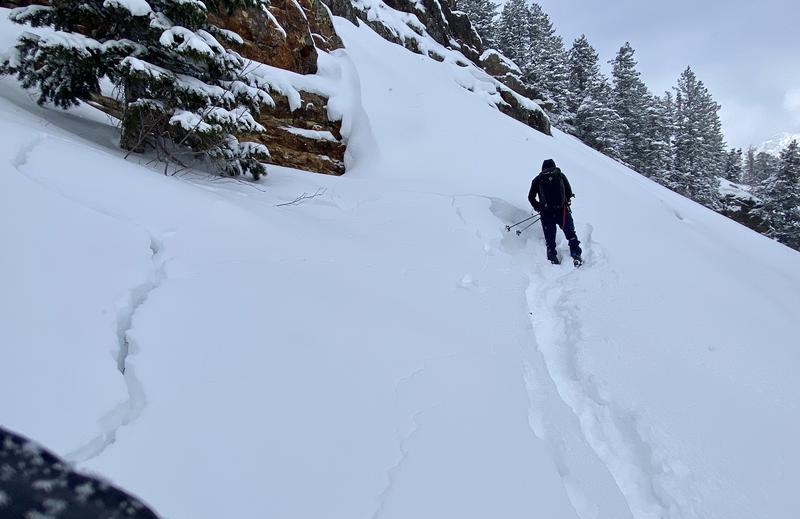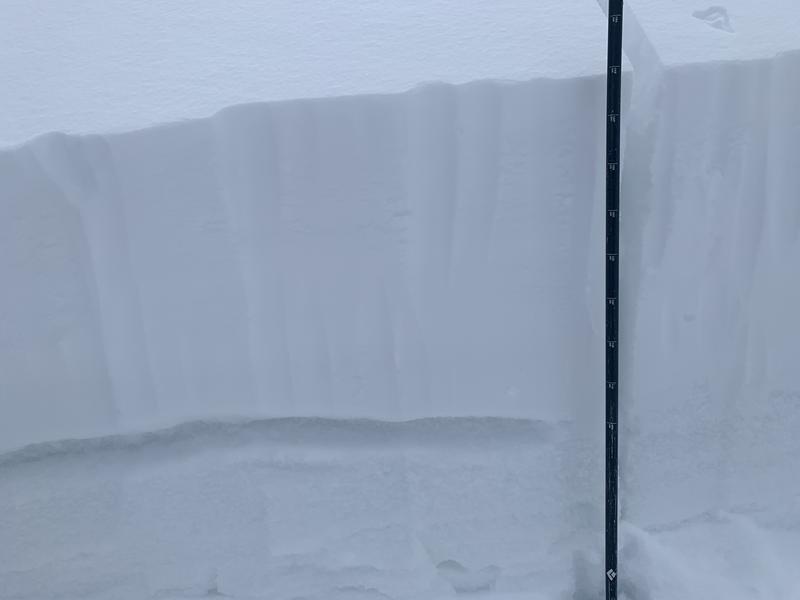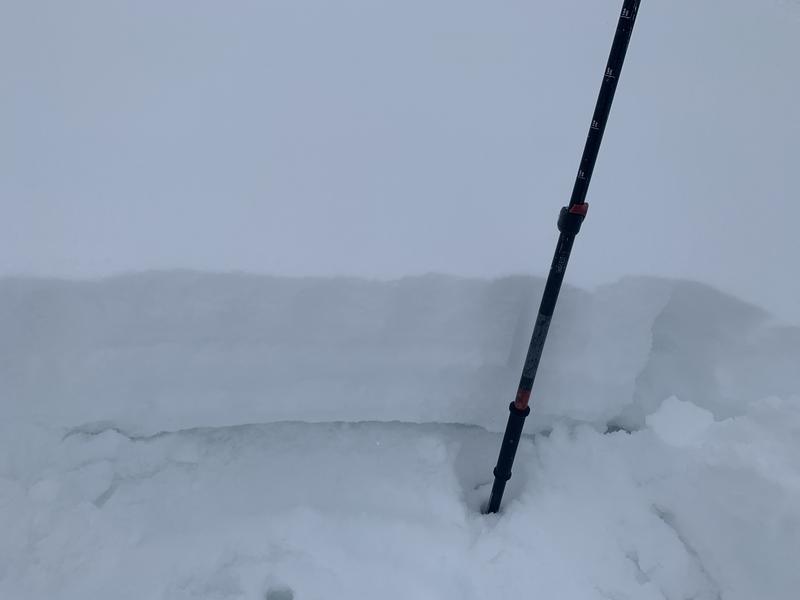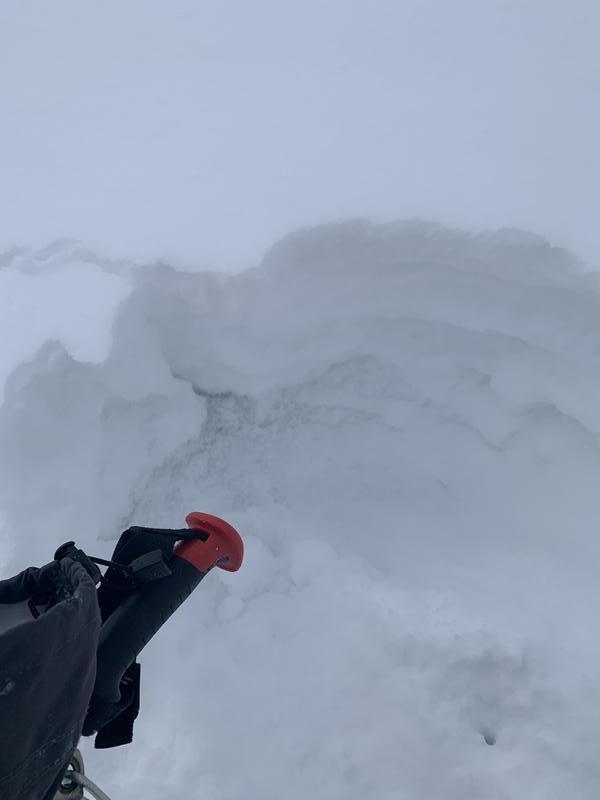We remotely triggered a 10-16" deep and 60' wide soft slab avalanche on a NE facing slope at 8700' that failed on the PWL. The slope was less than 35 degrees and so the "avalanche" ran perhaps a foot downhill at most.
It's likely that there may be a "sweet spot" for instability on northwest to east facing slopes at the mid-elevations. (West may also be at play but there is some uncertainty here.)
- At the low elevations, very weak faceted snow exists but there doesn't seem to be much of a snow/wind load above to create a cohesive slab except in isolated terrain (that perhaps has seen more wind).
- At the high elevations, weak faceted snow exists, but there is a lot of uncertainty as it is capped by spatially variable wind crusts.
- At the mid elevations, very weak faceted snow exists and there are increasingly more places where the overlying slab has consolidated due to wind and settlement.
As we know, you need a few ingredients for an avalanche: a slab, a weak layer, a slope steep enough to slide, and a trigger.
Extended Column Tests - ECTPV (full propagation on isolation) from 8200-8400'.
Now the set-up is that the weak layers are easy to find: Jan/Feb drought layer facets (PWL) are buried 6"-2' (wind drifted areas) down and are LOOSE, grey, angular - the photos below make them easy to spot. Sometimes they sit above a crust, sometimes they don't.
Looking for a slab, however, can be very tricky for many reasons.
- It may appear that there is no slab because much of the top snow is "powder snow"; but in reality it may be the couple/few inches of snow directly above the facets may have consolidated enough to propagate a slab avalanche.
- Wind loading and snowfall patterns have been erratic and it is not necessarily possible to extrapolate one northeast facing slope at a certain elevation with another....even in the same drainage.
- In essence, the weak layer hunting is easy and obvious - it's now that the slab hunting is tricky...and potentially dangerous.
Again, it may be that the mid-elevation polar aspects may be the sweet spot for avalanche activity.
Last point: conditions are variable, tricky, and dangerous in some areas. Collapsing and cracking may not be evident until you trigger the avalanche. Low angle skiing/riding (with no overhead hazard) is excellent without all the uncertainty and avalanche danger.










